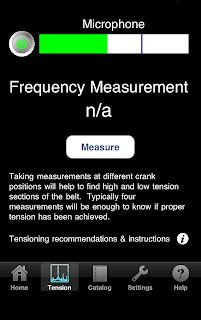CDrive versus Gates
When I purchased the Bike Friday Tikit, I opted for lower-priced CDrive-equipped model and that was a mistake. The CDrive worked for a while, but after about 300 miles I found the belt slipping when pulling away from a stop in a slightly higher-than-normal gear. The belt "snubber" that held the belt firm against the rear pulley (meant to prevent this behavior) actually seemed to cause the belt to deteriorate. After 500 miles of use the, belt slippage became too annoying and I had the good folks at Cycle Monkey replace the CDrive with Gates Center Track pulleys and belt. Changing to the Gates components meant replacing the crankset, but I was able to re-purpose that crankset on my Prole. With the Gates equipment installed, the belt slipping stopped. If I had it to do over again, I would pony up the extra cash for the Gates belt-drive from the get-go.
Shimano Nexus
I originally had an 8-speed Alfine on my Prole and still have an 8-speed Nexus on the Tikit. My conclusion is that the Shimano 8-speed hubs (I have no experience with the 11-speed Shimano Alfine) are not ideal for belt-drive applications. Belts require tension and perhaps it is that force that causes Shimano's internally-geared hubs (IGHs) to make unhappy noises. And then there are occasional missed shifts, occasional slipped shifts, and the general feeling that things are not right. My theory? The Shimano design uses a large diameter roller bearing on the drive side and it isn't up to the stress that the belt tension produces. The Rohloff uses sealed bearings on both the drive and non-drive sides. A heavier, but more robust and reliable design.
I can live with these shortcomings on the Tikit for shorter, intermodal style transportation. I seldom ride the Tikit more than 8 or 10 miles at a time, but when I do ride farther the Shimano Nexus really starts to bug me. With the CDrive set-up, the ride characteristics became intolerable. With the Gates equipment and the Nexus, the Tikit is quite usable. I'd like to put a Rohloff on the Tikit, but will have to keep saving for that upgrade.
Proletariat, mit Rohloff
On the brighter side, my Rohloff-equipped Prole has turned out to be everything I hoped it would be. After over 4,000 miles of cycling pleasure, it is difficult to describe the Rohloff without using superlatives. The Rohloff SpeedHub is rock-solid, bullet-proof, solidly-engineered, confidence-inspiring, ultra-reliable. The Rohloff is more expensive than the Shimano IGHs, but it's in a totally different class.
 |
| Proletariat, with recently added drop bars |
After a year, I experienced stripped axle threads on the non-drive side of the Rohloff caused by a slightly too-short axle for the Prole's thick dropouts. That was quickly fixed, under warranty.
I noticed after 300 miles or so of use that the belt would start to become a bit noisy, making a slight squeaking/whirring noise. To stop the noise, I had tweak the belt tension every 300 miles or so. The culprit turned out to be rear axle slippage in the horizontal dropouts. Reinstalling the original tensioning nut that I had removed from the drive side was the solution. If you have a frame with horizontal dropouts and are using a belt-drive, I suggest using a drive-side tensioned arrangement such as the Surly Tuggnut.
Another issue was the bearing seal on the drive side began to weep a small amount of oil after about 3,500 miles of use. Again, that problem was fixed under warranty and has not returned. The leak may have been caused by me running a bit too much tension on the belt. It took quite a while to clean the mess off of the Gates belt with mild soap and water!
Good Tension, Good Alignment
Many bike mechanics tension Gates belts solely by feel. I like the Gates iPhone App because it lets you set the tension by plucking the belt like a guitar string and reading the vibrational frequency. You'll need a quiet environment and a bit of patience. Avoid too much tension. I suspect that might lead to the aforementioned bearing seal problem.
I've also discovered that the rear wheel alignment needs to be pretty precise if you want quiet belt operation and consistent tension across the rotation of the belt and crankset. I currently tension the belt on my Prole to about 45Hz with good results.
Bicycling Unchained
What's the best part of having a well-maintained and properly-adjusted belt drive bike? Belt-drive bikes are uncannily quiet and smooth, especially with the Rohloff. Be sure you have a bell on your bike that you can ring as a courtesy to pedestrians who might not hear you approaching. When it comes to Rohloff versus Shimano, I've become a SpeedHub evangelist: The Rohloff is not just a little bit better, it's a whole lot better. You get what you pay for and in my book, the Rohloff Speedhub is worth the cost.




No comments:
Post a Comment